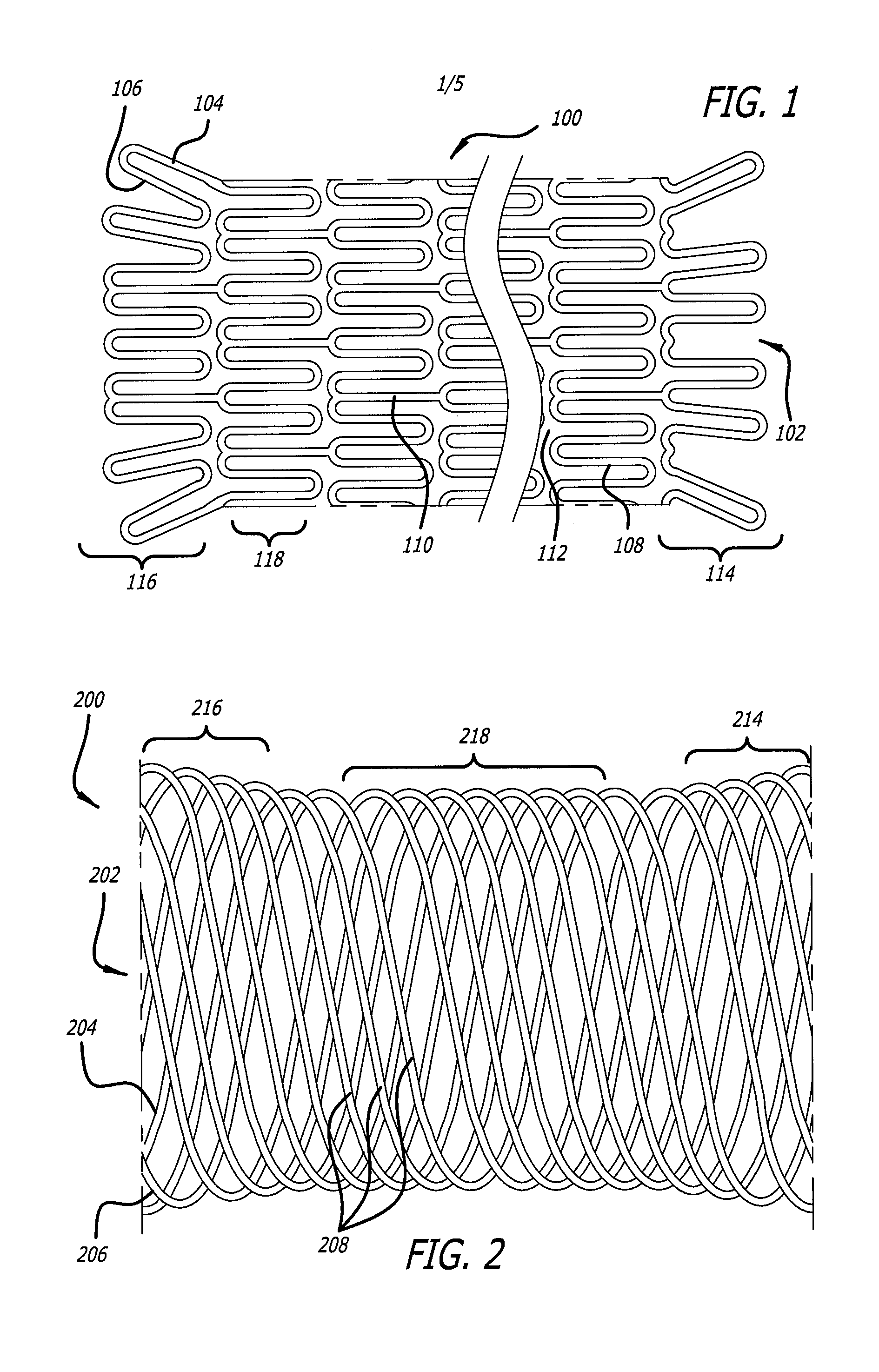Tracheobronchial implantable medical device and methods of use
a technology of tracheobronchial and implantable medical devices, which is applied in the field of tracheobronchial implantable medical devices and methods of use, can solve the problems of granulation tissue formation, mucous plugging, and stent migration, and achieve the effects of reducing the risk of infection
- Summary
- Abstract
- Description
- Claims
- Application Information
AI Technical Summary
Benefits of technology
Problems solved by technology
Method used
Image
Examples
Embodiment Construction
[0018]Embodiments of devices and methods for treating a diseased tracheobronchial region in a mammal, including, but not limited to, humans, are herein disclosed. In some embodiments, the device can be an implantable medical device such as a stent. Representative examples of implantable medical devices include, but are not limited to, self-expandable stents, balloon-expandable stents, micro-depot or micro-channel stents and grafts. In some embodiments, a treatment method can be delivery of a stent to a tracheobronchial region by a delivery device such as a catheter assembly.
[0019]In some treatment applications, a stent may only be required to be present in the tracheobronchial region for a limited period of time. To accommodate this, a stent can be made of a biodegradable, bioerodable or bioabsorbable polymer, hereinafter used interchangeably. A stent can also be made of a biostable or biodurable (hereinafter used interchangeably) or a combination of a biostable and biodegradable po...
PUM
| Property | Measurement | Unit |
|---|---|---|
| pitch of angle | aaaaa | aaaaa |
| pitch of angle | aaaaa | aaaaa |
| pitch of angle | aaaaa | aaaaa |
Abstract
Description
Claims
Application Information
 Login to View More
Login to View More - R&D
- Intellectual Property
- Life Sciences
- Materials
- Tech Scout
- Unparalleled Data Quality
- Higher Quality Content
- 60% Fewer Hallucinations
Browse by: Latest US Patents, China's latest patents, Technical Efficacy Thesaurus, Application Domain, Technology Topic, Popular Technical Reports.
© 2025 PatSnap. All rights reserved.Legal|Privacy policy|Modern Slavery Act Transparency Statement|Sitemap|About US| Contact US: help@patsnap.com



